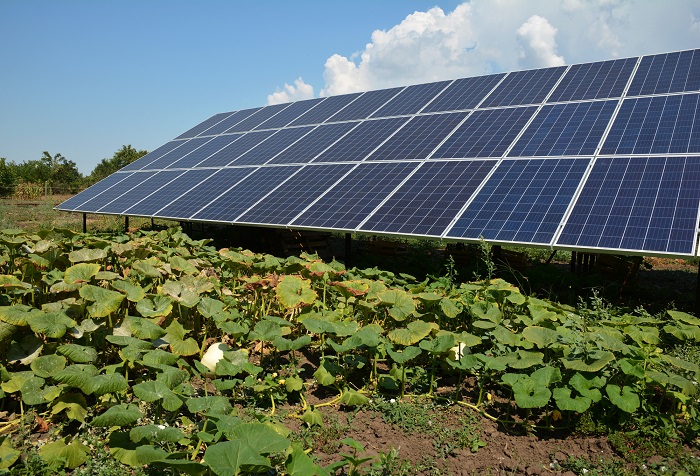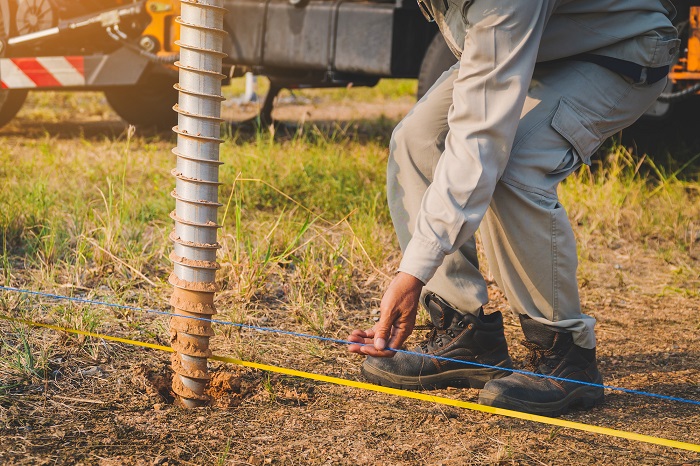
Are you considering installing ground-mounted solar panels to power your home or business? With the rising energy costs and the demand for renewable energy sources, these solar panels are a viable option. They provide cost-effective and sustainable electricity, which you can use in residential and commercial settings.
As you switch to solar energy, here are a few things you need to know about ground-mounted solar panels.
Why Ground Mounted Solar Panels?
As the name suggests, ground-mounted solar panels are installed directly into the ground. They work just like regular solar panels (rooftop solar panels) except for a few things.
First, ground-mounted systems are more expensive to install because of the labor and resources required. You’ll need experts like Colorado home solar installation to first construct the support of the panels. They’ll need to determine the support’s accurate length and design it to allow the panels to receive as much sunlight and capture the most energy. Although you can DIY such tasks, you may need to gain the skills to set up your support structure to maximize the benefits of ground-mounted solar panels.
Secondly, these solar panels require more wiring since they’re far from the building. The more wires, the more likely you may mix them up and install your system wrongly. Speaking of benefits, here’s why you may need a ground-mounted system instead of other solar panels.

- Flexible Installation Locations
This system doesn’t need any direct attachment to structures like buildings giving you greater flexibility when choosing the location for installation. You can install solar panels in the yard and open fields. It also provides more access points than previously available through traditional rooftop installations alone.
Ground-mounted solar panels are a good alternative where roof mounting is unsuitable.
- Increased Solar Production Potential
These panels typically have no obstructions, such as tree branches above them. They receive total exposure to sunlight all day long without interruption. As a result, they produce higher performance levels than those on rooftops.
Furthermore, they can also be adjusted seasonally to suit specific weather conditions better. For instance, you can angle them towards a lower position in winter if less sunlight is available.
- Virtually Maintenance Free
Ground-mounted systems require minimal maintenance since all components are usually in tamper-proof enclosures. It prevents any tampering from occurring while keeping dust and dirt away at the same time. It makes these types of setups ideal for those who don’t have enough time on their hands. It’s also preferred if you don’t have the skillset required to maintain overhead installation designs.
Most manufacturers also have warranties of up to twenty-five years, adding another security layer. You can relax knowing your investment will remain intact well into the future without worries about expensive repairs.
- Increased Safety Levels
A ground-mounted solar panel setup eliminates any potential trip hazards common in rooftop installations or maintenance. It’s especially important for homes with small children or older people. All components are also secured firmly into place using quality mounting hardware. It helps to prevent damage or theft, especially during winter when most systems are inactive.
- Enhanced Aesthetics
Finally, these panel systems can also have aesthetically pleasing effects on any property they occupy. They give off a sleek and modern look that enhances any landscape or surrounding environment while providing all the other benefits. It makes them great for residential properties looking for something unique and adding value through improved curb appeal.
Other than the above advantages, using ground-mounted solar panels makes your home or commercial building eco-friendly. It’s especially important in the age of climate justice advocacy and the championing of alternative fuel options.
The Installation Process
You can install ground-mount solar arrays on any flat, open surface with sufficient space. The exact cost associated with such an installation will depend on your specific location. Any additional components needed for its successful completion, such as concrete footings, are also essential to factor into this. With this in mind, here is how you’d go about installing these types of solar panels:
Step One: Site Selection And Preparation
The first step is selecting a suitable site with plenty of sunlight exposure throughout the day to install your system. The professionals you hire will come in handy in helping you identify and prepare suitable grounds. Ensure you have enough room for all components, including wiring, mounting hardware, and safety clearance around the panel edges.
The area also has to have access to necessary utilities. Depending on your type or model, these generally include equipment like conduit runs from inverter locations to the main switchboard. Trench digging may also be required, so ensure you’re prepared.
Prepare the selected grounds by clearing away any obstructions that could impede progress. Remove rocks or large roots; you’ll set the stage for the next step.
Step Two: Panel Layout And Mounting Assembly
After you’ve selected and prepared the site, it’s time to set up your panels on the ground in a neat pattern. Each panel should be lined up properly for optimal mounting efficiency and balance. Once done, begin the assembly process. Screw all support beams into place securely and affix the panes using the appropriate hardware detailed within the product instructions.
Step Three: Electrical Wiring And Connections
The next step is running electrical wires between components, such as inverter locations and junction boxes. These individual sections have to be connected using suitable connectors or cable ties if needed. It ensures they’re adequately sealed against infiltration or condensation buildup over time due to excessive weather exposure. Again, make sure that this step follows manufacturer guidelines to the letter.
Step Four: Pre-Commission Testing
Once you’ve wired everything, move on to the testing phase. It’s where the system gets powered up temporarily using an external source like a generator or battery bank. It allows you to check that the voltage output and current readings are all within the expected parameters before the full launch. Without this crucial stage, it could be costly and dangerous if something fails after you’ve finalized the installation.
Step Five: System Launch And Finalization
Finally, if the testing phase succeeds, you can commission the system. Connect it to the grid, main switchboard line, or other power supply leading to your appliances or storage batteries. You may need to follow up with additional programming to ensure your system works as outlined in the product documentation. With that, your ground-mounted solar panel system should now be ready.
The installation process for a ground-mounted solar panel system is relatively easy. These steps will help ensure everything goes smoothly and efficiently from start to finish. For the best results, remember to do research before starting construction projects like this one.
Maintenance Requirements
When properly maintained, ground-mounted solar panel installations can last up to 25 years or longer before needing replacement. It depends upon how often you use them throughout this period.
These array setups don’t rely solely on traditional roofing materials like tiles and slates for stability. As such, they often require fewer repair and maintenance visits. However, schedule regular check-ups with a qualified technician for optimum performance.
These systems’ most crucial maintenance requirements include cleaning, inspection, repair or replacement, and monitoring.
- Cleaning Requirements
Cleaning is a necessary part of maintaining ground-mounted solar panel systems. It has to be done regularly, especially in areas with high levels of dust or debris. It may also need the occasional removal of bird droppings, which can cause corrosion if left unattended.
Use a soft brush to gently scrub off the accumulated dirt from the glass surfaces. Follow this with a rinse using clean water. Please avoid harsh chemicals that could damage the panels. Mild detergents will do.
Ensure you follow manufacturer instructions on cleaning your system. You can always hire a professional for the best results while factoring in the system’s safety and yourself.
- Inspection, Repair, And Replacement Requirements
Inspections should be done every six months by qualified technicians who understand how photovoltaic systems work. They look through all visible components, like wires and other parts, ensuring everything looks healthy. Regular inspections also allow them to identify potential problems before they become more severe and costly to repair.
If any component needs repairs and replacements, only someone with experience can do so. Incorrect methods can further damage your system or even cause electric shocks. So, ensure whoever you contract is certified and they have the necessary specialist tools before starting their job.
- Monitoring Requirements
Monitoring is an essential part of maintaining ground-mounted solar panel systems. It involves regularly checking voltage readings from different points within its circuitry and temperatures inside each component. This data is crucial as it helps diagnose future malfunctions before they become an issue.
Monitoring also needs to track how much energy the panels produce over time. It allows you to spot overall discrepancies between what you expect and reality. For example, a sudden drop-off could mean an underlying problem with a particular area. Reviewing these details ensures that everything runs smoothly and your system is at long-term peak efficiency levels.
Ground-mounted solar panel systems require regular maintenance to function optimally and safely. Remember that this process requires qualified individuals, so hire a professional for the best results.
Summary
You can enjoy a sustainable alternative to traditional energy sources using ground-mounted solar panels. You won’t sacrifice the quality of output or reliability of service delivery long term either! With proper care and maintenance, these systems can provide reliable renewable electricity for many years, so they’re worth it. Start researching the best plan for your needs today and take advantage of the many benefits of solar energy.


